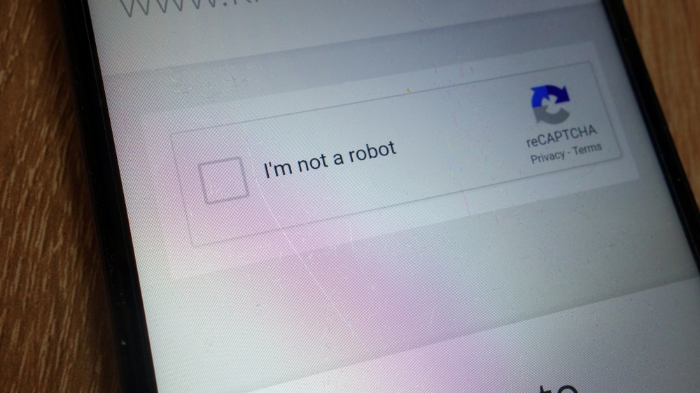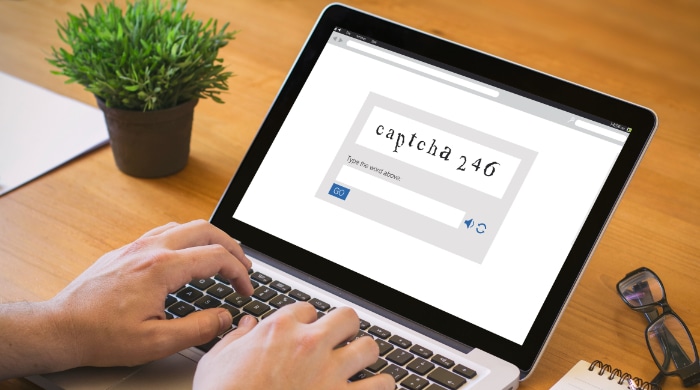Human Verification: More Than Just a CAPTCHA

Picture this: You’re about to log into your favorite online service, and suddenly you’re asked to prove you’re not a robot. Ever wondered why that’s necessary? Human verification is that crucial but often overlooked gatekeeper that stands between us and the virtual worlds we frequent.
More than just a momentary hurdle, it plays an essential role in shaping the cybersecurity landscape, safeguarding data, and ensuring only authentic human activity gets through.
What is Human Verification?
Human verification serves as the digital security checkpoint to ascertain that the user interacting with an online platform is, indeed, human. The overarching objective is to create a barrier that is trivial for humans to cross but almost insurmountable for bots and automated systems.
Definition and Objectives
Human verification refers to various tests or challenges that online platforms administer to users to ensure they are not automated bots. The primary objectives are two-fold.
First, it aims to safeguard the integrity and security of online platforms. Second, it seeks to protect the resources of the server by blocking non-human traffic, which often consists of spam or malicious activities.
The Problem of Bots and Automated Systems
In the age of advanced technology, bots and automated systems have become increasingly sophisticated. They are capable of carrying out tasks at speeds and scales that are impossible for a human.
From filling out forms automatically to scraping data and executing cyber-attacks, these systems present a significant threat to online security. Therefore, there is a pressing need to distinguish between human and automated interactions effectively.
Distinguishing Between Human Users and Automated Systems
The crux of human verification lies in its ability to tell humans and bots apart. It poses challenges that are simple for humans to solve but are computationally intensive or impossible for bots.
This could range from identifying distorted characters to clicking on specific images. These tests are based on cognitive functions like pattern recognition or basic decision-making—abilities that humans possess but are exceedingly difficult for automated systems to mimic.
Types of Human Verification
From blurry texts to quick math problems, human verification takes on various forms to test the authenticity of a user.
CAPTCHA Methods
CAPTCHA, which stands for Completely Automated Public Turing test to tell Computers and Humans Apart, is perhaps the most widely recognized form of human verification.
Text-based CAPTCHA
One of the earliest forms, text-based CAPTCHA presents the user with distorted text characters that must be entered correctly to proceed. The distortion of text adds complexity that is relatively simple for humans to decode but challenging for bots.
Image Recognition CAPTCHA
In this variant, users are typically presented with a grid of images and instructed to select those that fit a particular description, such as “Select all images with traffic lights.” Here, semantic understanding and object recognition are tested, skills where humans generally outperform bots.
Challenge Questions as Arithmetic Queries
In contrast to personalized security questions, some human verification systems opt for basic arithmetic or general knowledge questions that almost anyone can answer. For example, users may be asked something straightforward like, “What is 9 multiplied by 2?”
These questions are designed to be easily solvable for humans but act as another stumbling block for bots. Because they are based on elementary arithmetic or common knowledge, they don’t require any personal information from the user, making them a neutral and universally applicable method of verification.
Behavioral Analysis
Rather than posing a straightforward challenge, some platforms monitor user behavior to identify bots. Parameters like mouse movements, typing speed, and even the manner of scrolling can be indicators.
The benefit here is that legitimate users are not interrupted by a verification process, as the analysis occurs seamlessly in the background.
The Role of Human Verification in Cybersecurity

Often acting as the first line of defense, human verification holds a position of considerable importance in the field of cybersecurity. While it may appear as a mere inconvenience to users, this initial layer of screening is vital for preventing a range of nefarious activities, including spam, fraud, and abuse.
Preventing Spam, Fraud, and Abuse
Human verification serves as an obstacle for automated bots aiming to spam websites, forums, or even online polls. By requiring a human touch—like solving a CAPTCHA or answering a challenge question—the number of automated submissions can be drastically reduced, thus maintaining the quality of interactions and content on a platform.
Protecting User Accounts
Human verification is not just for initial registration or sign-ins; it’s also implemented when suspicious activity is detected on a user’s account. For instance, multiple failed login attempts or logging in from a new location might trigger verification requirements.
This adds an extra layer of protection to sensitive information and guards against unauthorized access.
Case Study: Online Banking
A real-world application of human verification in enhancing cybersecurity can be observed in online banking platforms. Given the highly sensitive nature of financial transactions, these platforms use multi-layered verification processes, such as two-factor authentication combined with CAPTCHA tests, to ensure that only authorized users can access their accounts.
These methods serve to protect both the user’s assets and the integrity of the financial institution itself.
The User Experience Perspective
While the cybersecurity advantages of human verification are clear, they often come with a trade-off—user experience. How do these checkpoints impact the smoothness of the user journey? What are the considerations that designers and developers need to keep in mind?
Balancing Security and User Experience
Human verification methods often present a dilemma for designers. On one hand, they’re essential for keeping a platform secure; on the other, they can disrupt the user flow and even frustrate users to the point of abandonment.
The challenge lies in implementing security measures robust enough to deter bots but not so intrusive that they alienate genuine users.
Inconvenience Caused by Stringent Verification
Undoubtedly, some human verification methods can be cumbersome. For instance, CAPTCHAs that are too distorted may require several attempts, and complex arithmetic questions can be time-consuming.
These hurdles could discourage users, leading them to either abandon the task at hand or seek alternative platforms that offer a smoother experience.
Efforts to Minimize Intrusion
The good news is that strides are being made to lessen the impact of human verification on user experience. For example, behavioral analysis techniques can run in the background, monitoring activity to determine whether a user is human without requiring explicit tests.
Another avenue being explored is adaptive authentication, where the level of verification is adjusted based on the risk profile of the activity being attempted.
Ethical Implications
As with many technological tools, human verification comes with its own set of ethical questions. While it serves critical functions in cybersecurity, there are concerns about data privacy, accessibility, and the broader implications for freedom and surveillance in the digital world.
Data Privacy Concerns
Human verification systems often collect data about user behavior, especially in methods like behavioral analysis. Even though this data is generally used for the noble cause of distinguishing humans from bots, questions arise about what else the data could be used for and who has access to it.
Ethical practices demand transparency from service providers about how this data is stored, used, and shared.
Accessibility Issues
Not everyone finds it easy to clear CAPTCHAs or answer challenge questions. Individuals with visual or cognitive impairments may find these tests to be barriers to entry.
While alternative methods like audio CAPTCHAs exist, they are not universally implemented, raising ethical questions about inclusivity and accessibility.
Freedom and Surveillance
Human verification adds another layer to the digital identity each user carries. This raises concerns about the balance between security and freedom.
While human verification acts as a gatekeeper against malicious entities, there’s an argument to be made that these checkpoints contribute to an overarching culture of surveillance. The ethical debate here centers around the extent to which security measures can be implemented before they begin to infringe upon individual freedoms.
Conclusion
Human verification serves a crucial role in modern cybersecurity, acting as a frontline defense against spam, fraud, and unauthorized access. While various methods exist—from CAPTCHAs to challenge questions to behavioral analysis—each comes with its own strengths and drawbacks.
These verification techniques are continually evolving to stay ahead of increasingly sophisticated bots. However, this is not just a technical issue; it also touches on aspects of user experience and raises ethical questions that span data privacy, accessibility, and the broader implications for freedom in a digitally interconnected world.
Striking a balance between security, user convenience, and ethical considerations remains a significant challenge, but one that must be met for the safe and equitable advancement of digital platforms.



